
‘The camera doesn't make a bit of difference. All of them can record what you are seeing. But, you have to SEE’
Ernst Haas
The difference between uninspiring, boring photos and those that pull us in more, can be summarised between these two images:
They both show a similar thing. We have a child playing with some cars while her older sister tries to do something else. They are both of my kids and I shot them within minutes of one another but they couldn't be more different in impact.
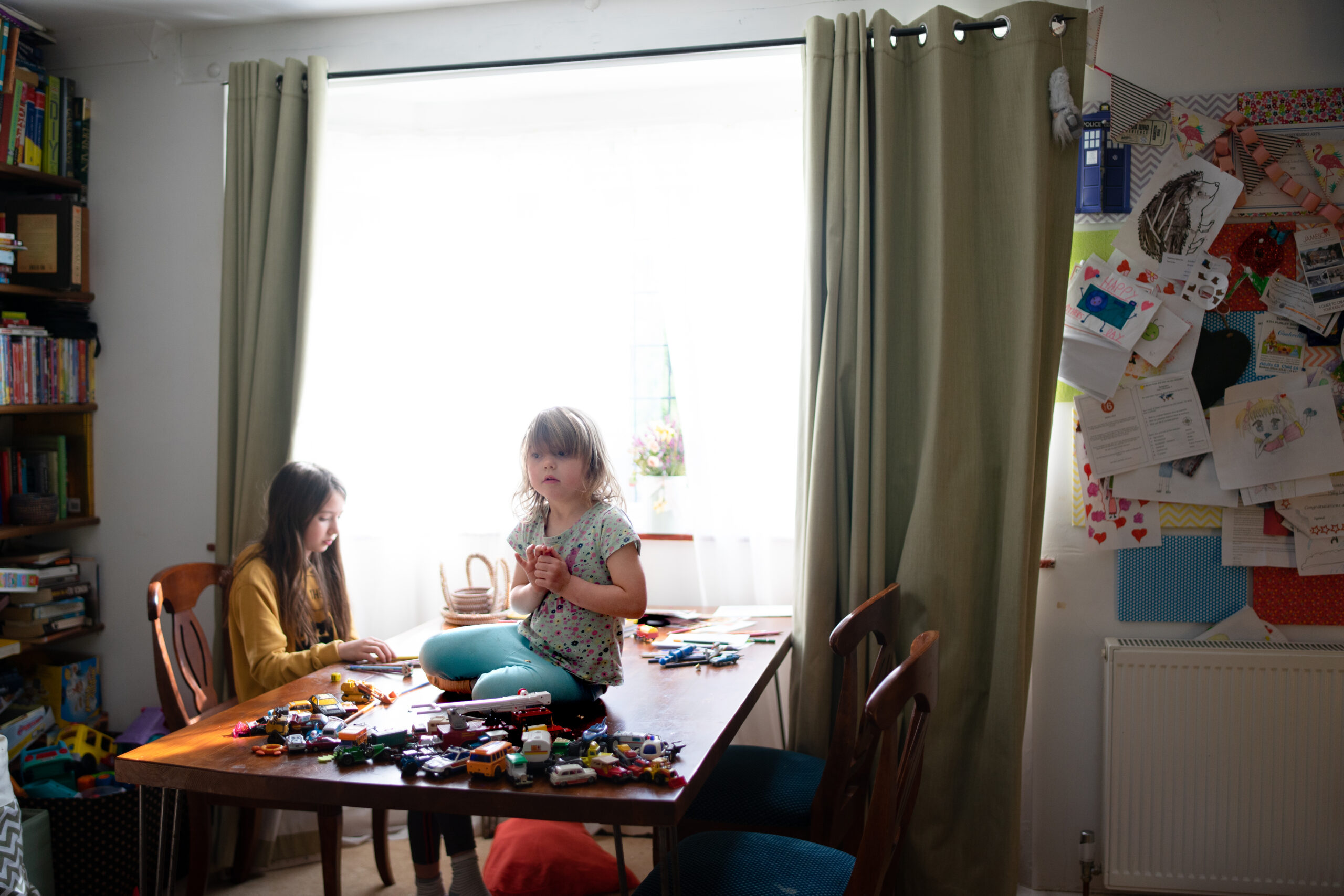
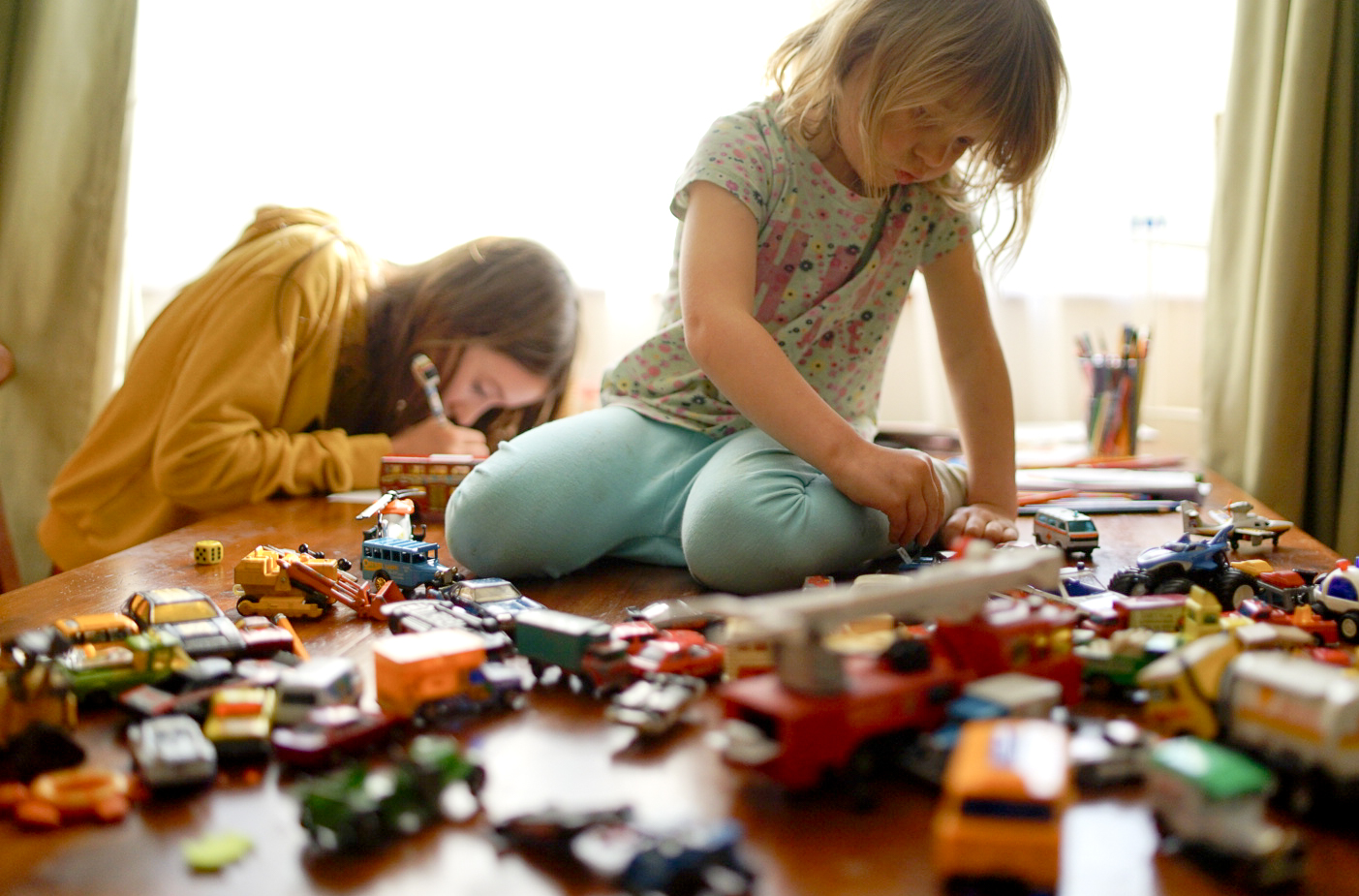
In the first image, there are so many things in the frame, it's hard to know what to pay attention to. So when you look at the photo as a viewer, you see it all. Everything is in focus, so everything seems equally important. The child was interrupted to look at the camera, so you're now paying attention to her, but really, there is no connection and the flow is interrupted. There is a glare from the window behind that takes our attention away from here again and the poor confused eye just doesn't know where to start and end and rest.
The second photo has a lot more going for it. For once, it knows what it's ABOUT - we see the child engrossed in the same activity, but because we watch as an observer, we are drawn to the action, we understand the concentration. The angle means we have lost a lot of the clutter from view, and the objects we do see are out of focus compared to the child, so it's clear for our brain that this is what the image is about AND they make sense of the story.
The difference between them boils down to the fact that the second photo is clearly ABOUT something, and what made it into the frame and what didn't supports that. The first photo... well, it's a confused mess.
I KNOW that this is a problem a lot of parents out there are having, and in our first lesson, we are tackling just that - in 2 steps:
Step 1: Making the photo ABOUT something
Step 2: Fixing what you SEE ( and what you do not see)
STEP 1: What is this photo ABOUT
OK, so this is a bit of a strange concept, but stay with me.
Grab your camera / or your phone and just point it at something. A cup of tea is just fine. Don't take a photo - YET.
Now I want you to consider: - what is this photo going to be ABOUT?
NOT what / who it is a photo OF. I want ABOUT - because 'about' brings with it a story. And stories are what make your images stronger.
Let me explain on my examples : the first image is a photo OF my daughter doing some painting. My daughter is in it, I even interrupted her to take the photo, so I know it's a photo OF her. But the second image is about HOW she is when she paints - her concentration, body language, pride in what she is achieving.
Because I looked at the scene and considered what it was that I was seeing - I was able to decide what I wanted to make my photo ABOUT.
So if your subject is your cup of tea, it could be ABOUT how lovely and hot it still is and noticing the steam rising from it ( it automatically gives us that lovely feeling). Or it could be about how it's just sitting there forgotten, with the crumbs of your breakfast, yet again, barely tepid. Or maybe, it's about that rare moment of where the world in front is chaos but you get your cup of tea to steady you.
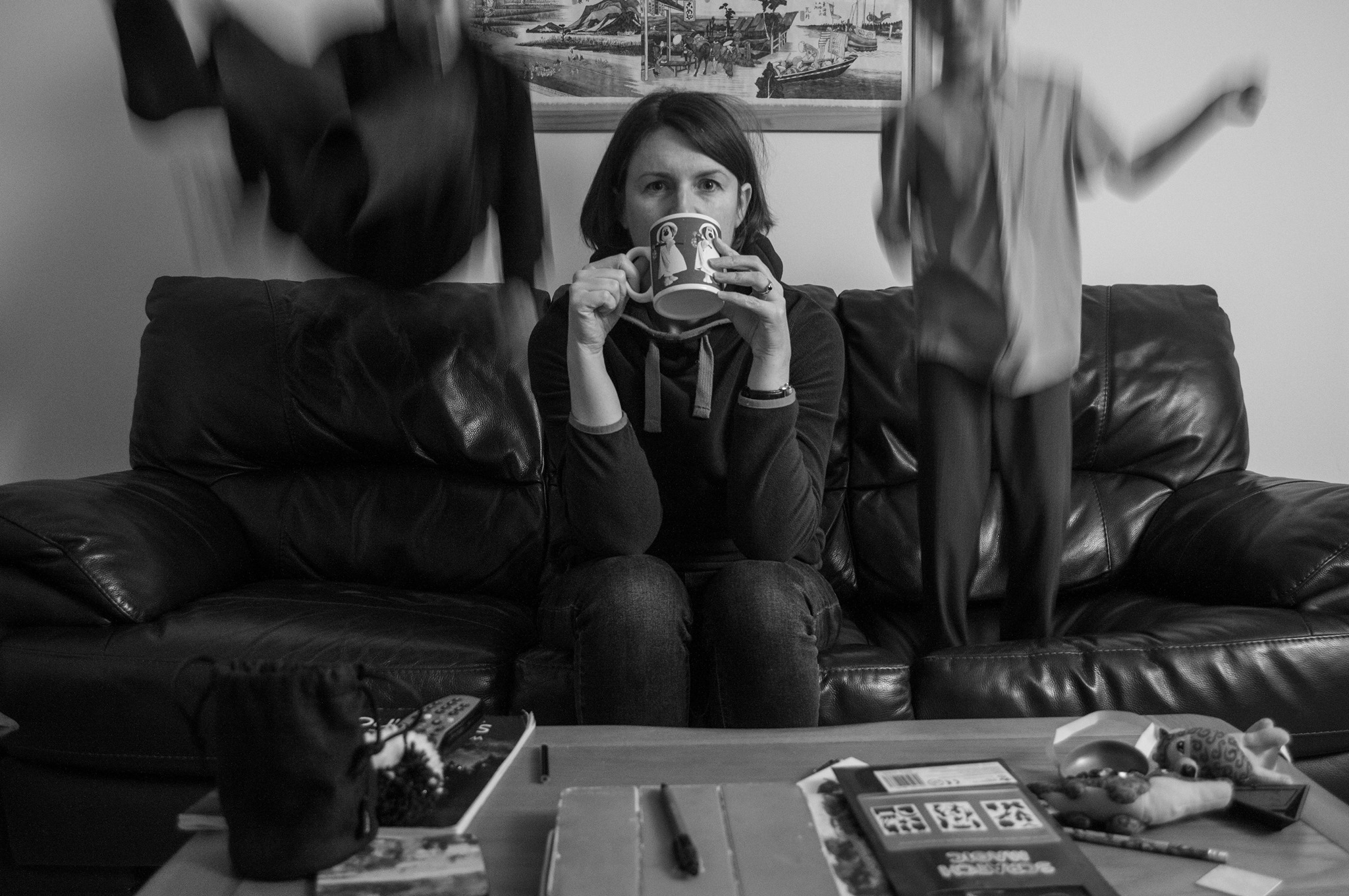
Photo by Helen Gray
Stop snapping - start capturing
Now I know, that this is a process that goes against the 'snap the moment!' thinking we're used to when taking photos of our children. And I'm not saying to never take those again. But if you can build in that little buffer, between seeing a scene and pressing the shutter button, your photos will only get better for it.
Find the KEY thing
I also fully appreciate that it's not easy. Sometimes you just see your child and how wonderful and beautiful they are and you just want to capture that. Mummy goggles and all. And that's fine - because here is the thing: if you know it's all about your child, you can just focus on that and simply make sure there is nothing else there that distracts from this. And if it's about something your child is doing - then make sure that you zero in on the bit that is the most important, most crucial about that action. And there may be more than one - depending on what's important to you in that moment.
- If your child just started walking - it's all about the feet. So you can really get down on the floor, get zoomed in on those feet and take the photo
- Or it could be about the determination they show trying to master that skill.
- Or it could be about the pride of the parent hovering over, ready to catch.
YOU DECIDE.
Once you decide what it's ABOUT - you can take a BETTER photo or photos! Why just limit yourself to one story?
Here are some questions that are useful in clarifying what your photo should be about:
WHAT IS THIS PHOTO ABOUT?
What or who is my main subject?
What is happening? or not happening?
What is the most important part of what you are seeing?
How does it make you feel?
Is there a connection with someone else?
Does it need a Big picture or should you focus on a detail?
If you show this to their Nan, will she know what this photo is about?
Step 2 : Fixing what you see
Here is the thing most people don't tend to think about. We look at photos with a different set of eyes than the eyes we have on when we look at the scene in front of us. It's not your fault, it's how our brains process what they see.

When you look at your child, your brain is immediately attuned to their importance. So it literally makes you disregard everything else that's in view. You didn't see that half eaten apple right next to your child, because you literally DIDN'T SEE IT.
We call it Mummy ( or Daddy) goggles. And if only your camera could get a pair, it would be great. But it can't. So it will record the half eaten apple, as faithfully as your beautiful child,
And then, when you look at the photo, you suddenly see it. Because the eyes with which you look at a photo, are different. You are not in the moment anymore, you are just looking at a rectangle that has an image of your child, and suddenly it all comes into sharp focus.

So we need to train ourselves in first - being able to see those bits that don't belong, and second - making them disappear.
Once you have decided what your image is about - it's easier to know what's needed in your image to help us show the About, that story.
But it helps to have a little shorthand in spotting and removing.
WHAT IS A DISTRACTION?
Anything that pulls our attention away from what the photo is ABOUT
Once you know what the photo is about, it's a lot easier deciding what should and shouldn't go into the photo. Mummy goggles be gone!
But now there is a small matter of, actually removing these distractions from your image. In some cases it's as easy as simply picking up that bit of debris cluttering our view. But in many cases, it's just not practical. Luckily, we have a few suggestions:
Removing distractions :

And I mean - don't just come closer : actually zoom in with your lens

Without going into technical details: when you keep your zoom 'unzoomed' ( it's a word, OK?) - because maybe you're close to your subject anyway, so why would you be zooming in? - when you keep your zoom unzoomed, your camera can often see MORE than you do with your naked eye.* It has a peripheral vision that's wider than yours, so it'll be seeing more on both sides and top and bottom.
But there is more: it might even make the space you see in front of you, LARGER than in real life (estate agent's favorite trick). Ever been to a see a flat / house that looked spacious on photos and then turned into a broom cupboard in real life? THAT.
But if you're not trying to sell a house, the outcome for your photos is this: when you do not use your zoom, your camera will be showing more in the foreground and background of your photos than you might be willing to show.
But by zooming in, you narrow down the camera's peripheral vision AND also visually compress the space, tightening what you see in the background AND blurring the background! So you can visually cut out half of your clutter simply by zooming in and taking a few steps back. Magic.
* I refer here to what you would get with a standard lens that would typically be supplied with your camera. If you are using a different, longer zoom or prime lens, you might be seeing slightly different things.
Does it work the same on my phone camera? It depends on wthether your pohone camera has a 'real' zoom - aka Optical zoom, or 'pretend' zoom - aka Digital zoom. In the first case, there is a change to the tiny lens itself when you zoom in and that causes the change in how the camera sees the world.
In the second case, we're just stretching pixels to make the subject in the frame larger. The equivalent of pinching and stretching the image on a ready made photo.

We often assume that when your child is somewhere with lots of clutter, in order to eliminate it from the image, we need to move the child.
In some situations - yes, that's the right thing to do. But often, your child is engrossed in play and won't take kindly to being asked to move.
But we forget that so much of what we see depends on our point of view. Sometimes the tiniest adjustment of your position will be enough to make a massive difference. One step to the left or right, or slightly adjusting your camera angle can eliminate a ton of unwanted rubbish.
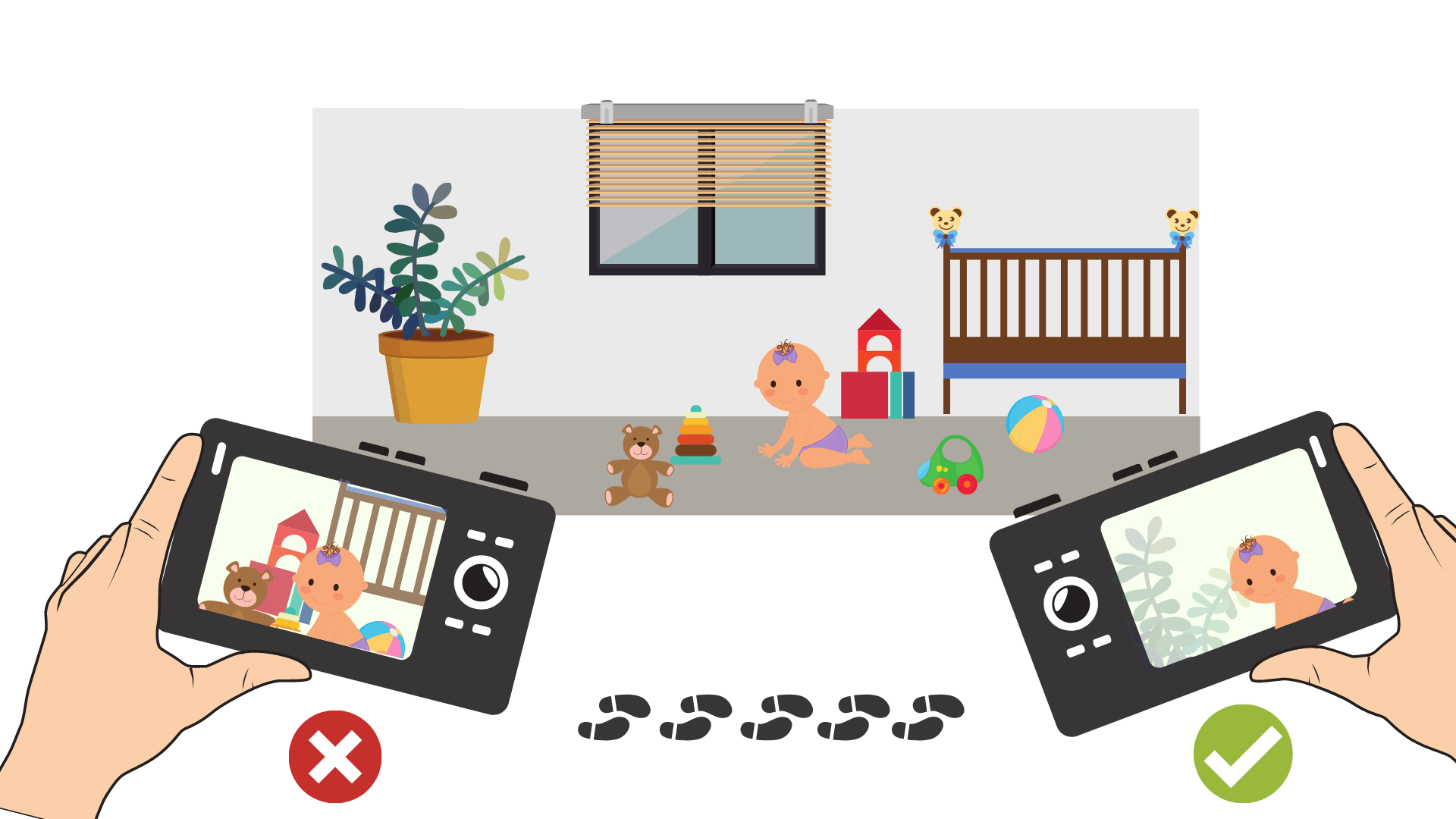

I know, right? A no brainer. And yet.....
90% of Britain’s family photos are taken from 5 foot high and 5 foot away. FACT. Probably.*
Most adults, when taking a photo of a child will simply assume the “upright - standing comfortably” position and expect the world to adjust. And the result? Boring photos with lots of background clutter, lots of floor and not a lot of depth. But more so than that - the perspective is off, and so are the proportions and the final result is less than inspiring.
Understanding how your shooting angles make a difference to your final photograph will serve you well, whatever you photograph. Often it's the easiest thing you can do and will make a massive difference whether you are shooting with your camera or your phone.
Let us give you a few pointers on what angles you might want to choose:
Child's eye view
One of the biggest bug bears I have with bad kids photography is the height of your angle. You shouldn't be taking the photo where it's comfortable for you - you should be taking it so that it's at the level of your subject. I would really really love you to stop shooting from your height level and get down on the floor and shoot at a flatter angle parallel to the floor. It helps you build in-depth and gives you more control of the background and keeps the person's proportions more natural.
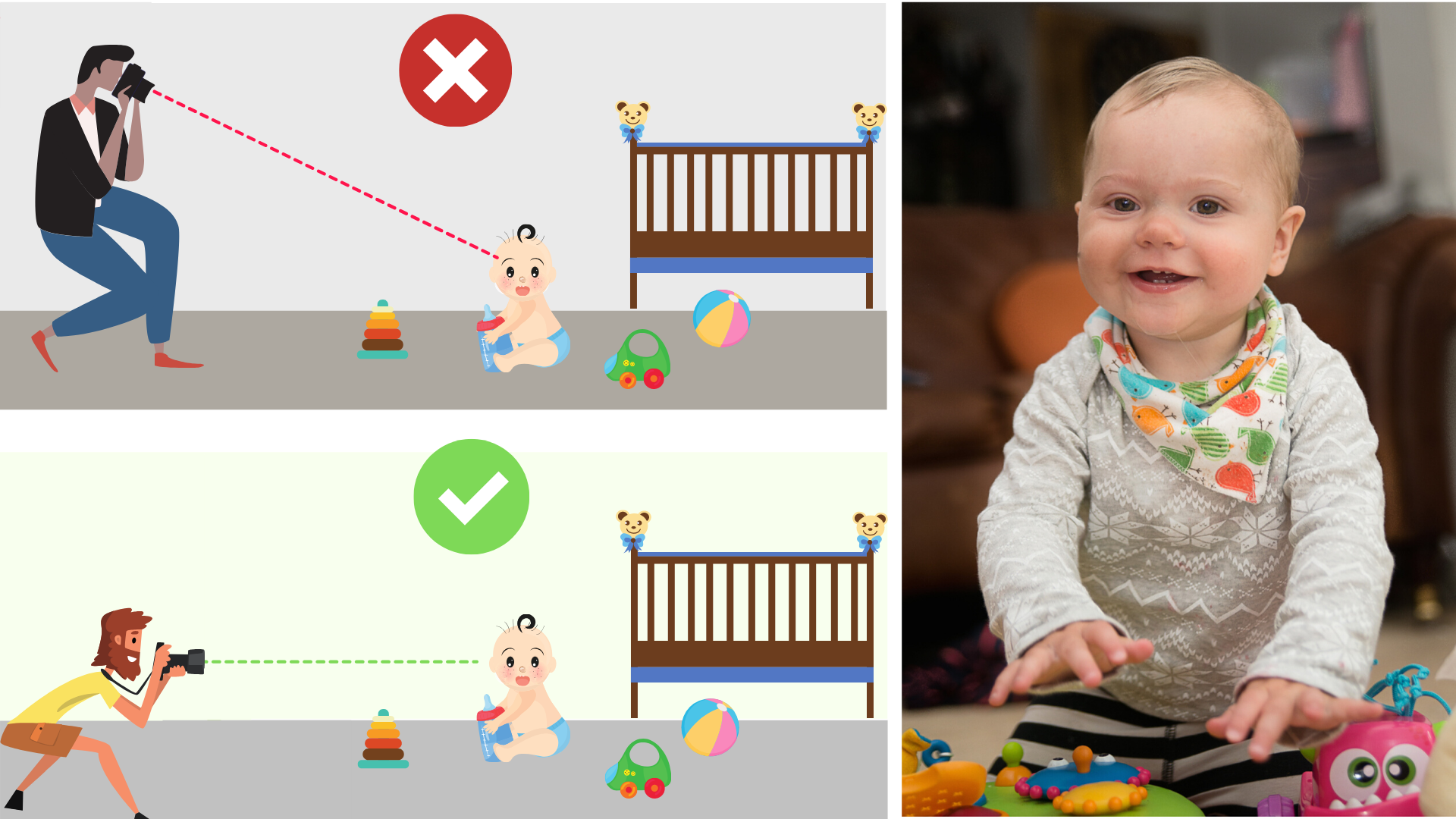
Ants View
A variation of the 'leveling with your child' but going even lower. Place your camera on the floor and let it do its job. It will capture some of the floor ( and blur some if it out) as well as your subject. In this case, I'd actually suggest keeping your zoom down to the lowest ( = not zoomed in) . You might need to subtly adjust the angle as well if you're getting too much floor.
The benefit of this angle is that you can use the ground in a way that can create an interesting textural contrast to your subject and what would otherwise be clutter, is raised to the 'context or the image' level.


Birds Eye View
Yes, I know this goes against all that I suggested earlier but hear me out. When you do a PROPER birds eye view, that means raise your camera DIRECTLY above the subject, you reduce the amount of clutter your camera sees. And what it does see is easier to control because you're only dealing with a small rectangle of your floor space. So it might be mayhem everywhere else, but on that little piece of space it's all calm, space and beauty.


And all together now:
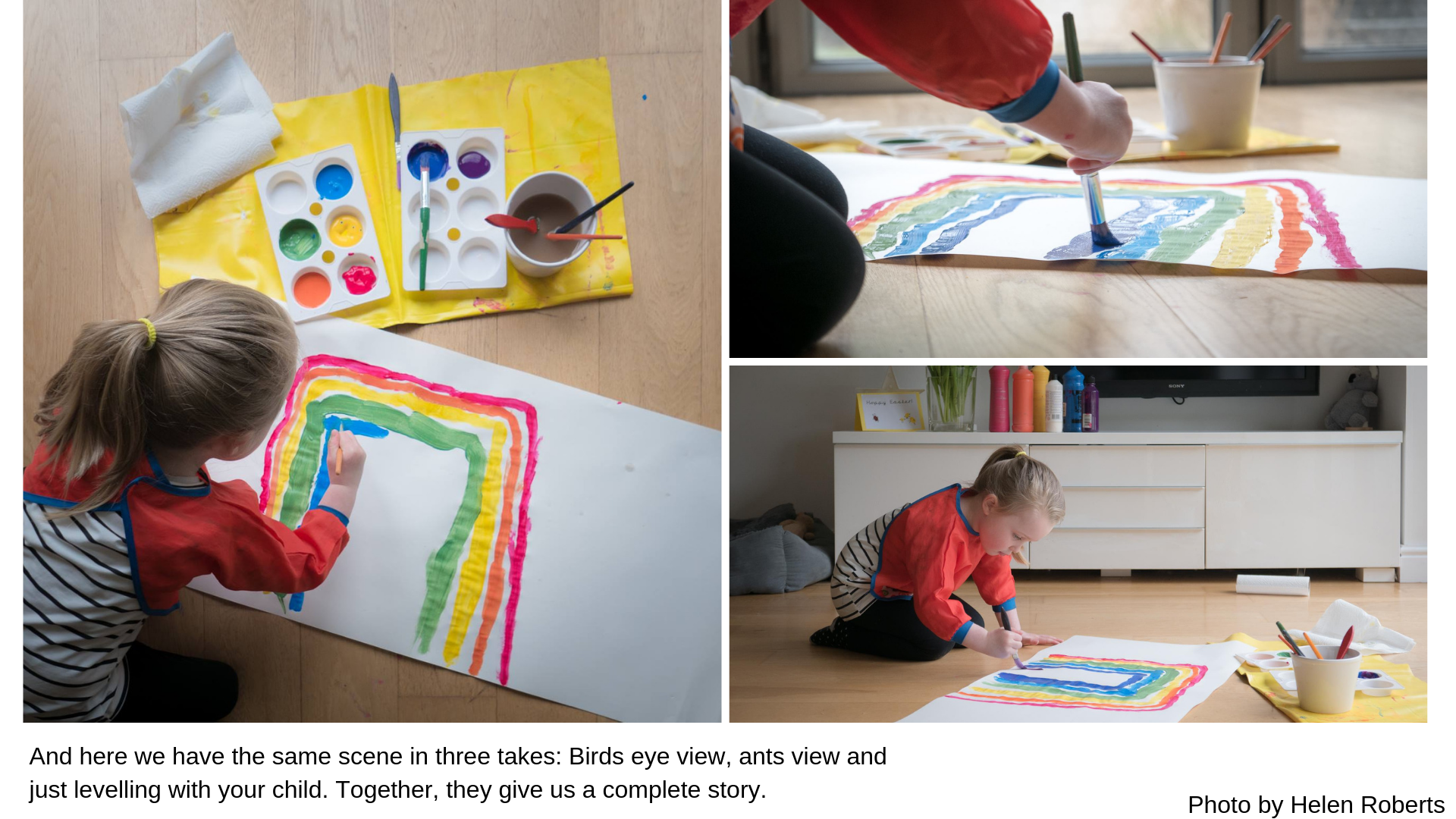
Lesson 1 Challenge
Capture your child / children today from at least 3 different angles. I want to see those flat, 'level with your child' angles, those 'birds eye view' and 'ants view' angles.
And with that, I want you to pay attention to how much or how little clutter you are including in your images - if it feels like too much of it is getting in consider our solutions: zoom in, change your position, change your angle, switch between vertical and horizontal and do your best to take off your Mummy / Daddy goggles!
